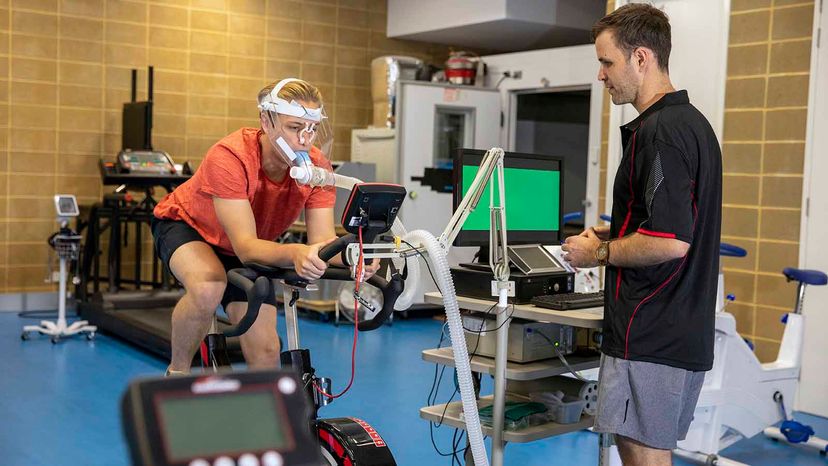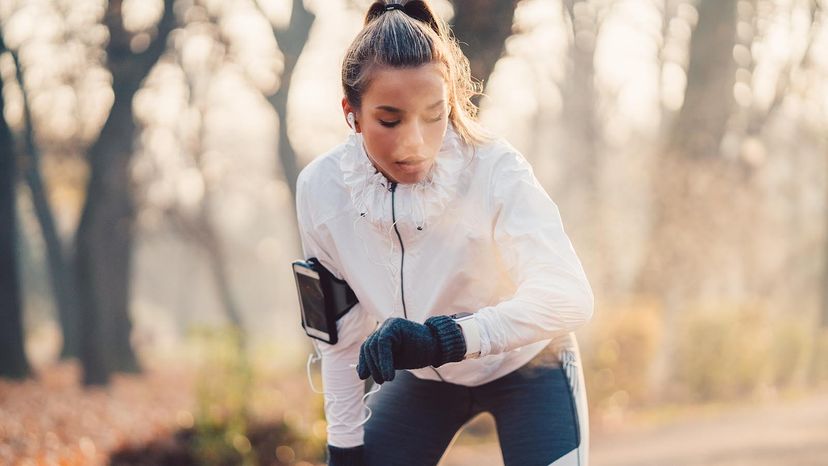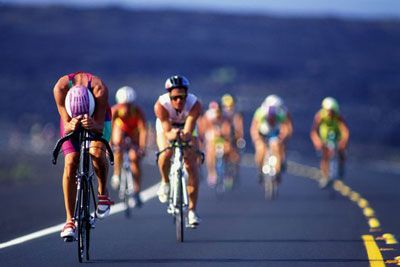
Your body must have oxygen when you're exercising. If you're an athlete, especially if you participate in endurance sports like running, you may have considered the importance of oxygen when you're training and competing. A popular measurement athletes use is maximal oxygen consumption, or VO2 max. Your VO2 max is the maximum amount of oxygen your body can process to produce energy, or your maximum aerobic capacity. Improving it can help you run faster and more efficiently.
The technically correct way to write the name of this calculation is VO2max, with V denoting volume, O2 denoting the chemical formula for oxygen, and max as an abbreviation of "maximum." In scientific documents, it's sometimes written with a dot above the V, denoting the rate of ventilation. The more common term is VO2 max (occasionally written VO2max) [source: Davies].
Advertisement
The history of VO2 max measurement goes back nearly a century. Physiologist and 1922 Nobel laureate A.V. Hill was known for his years of research into how muscles work, and he made what were probably the earliest studies in maximal oxygen consumption. Hill theorized that a high VO2 max value was essential for success in distance running. He also said that your VO2 max is limited by the ability of your cardiorespiratory system to move oxygen to your muscles [sources: Bassett and Howley].
Contemporary theories about the VO2 max value challenge Hill's cardiorespiratory limitation [sources: Bassett and Howley, Davies, Bosch]. Despite these new theories, athletes and recreational runners alike have latched on to VO2 max as an important calculation for training. Other measurements like time, average speed and heart rate help you determine your physical fitness at a given point in time. VO2 max, though, is viewed as a measure of how efficiently your body is working overall. Some runners even see VO2 max as the "maximum potential" a person can accomplish, and they adjust their training tactics to aim toward that potential.
This article describes how to calculate your VO2 max, how to use that calculation and how to improve your VO2 max as part of improving your athletic performance.
Advertisement


